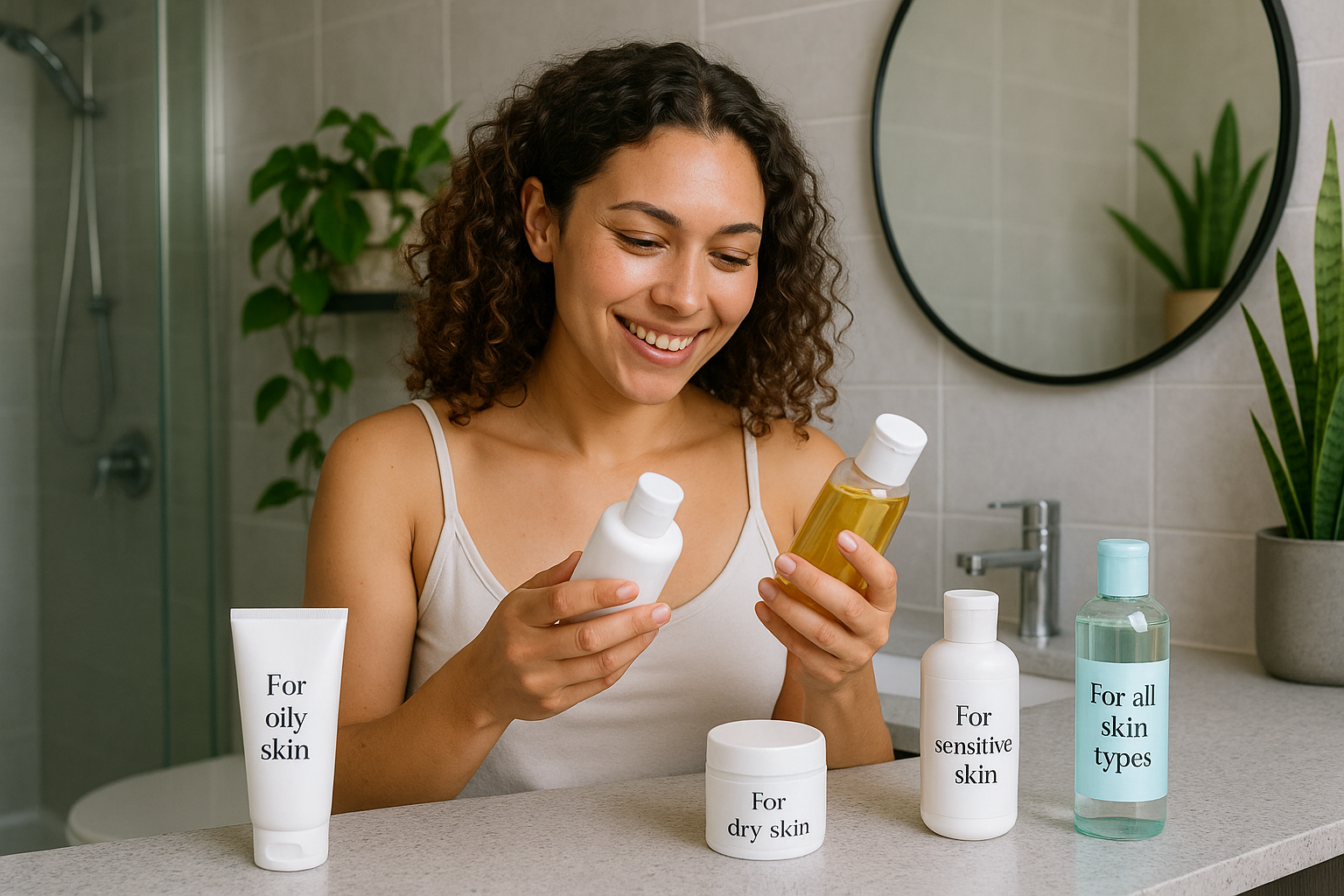Choosing skincare products can feel overwhelming — with endless shelves filled with creams, serums, toners, and cleansers, how do you know what’s actually right for your skin?
The key to creating an effective skincare routine is understanding your skin type and choosing products that support its specific needs. Whether you’re oily, dry, combination, or sensitive, using the wrong product can lead to irritation, breakouts, or wasted money.
In this guide, we’ll walk you through how to identify your skin type, what ingredients and formulas to look for, and how to simplify your skincare decisions for long-term success.
Step 1: Identify Your Skin Type
There are five main skin types:
1. Normal Skin
- Balanced: not too oily or dry
- Smooth texture and few blemishes
- Minimal sensitivity
Needs: Maintenance and gentle hydration.
2. Oily Skin
- Excess shine, especially in the T-zone
- Enlarged pores
- Prone to acne and blackheads
Needs: Oil control, light hydration, and exfoliation.
3. Dry Skin
- Feels tight or rough
- May flake or crack
- Dull appearance
Needs: Deep hydration, barrier repair, and gentle ingredients.
4. Combination Skin
- Oily in the T-zone, dry or normal elsewhere
- May have both breakouts and dry patches
Needs: Balance — control oil in the T-zone and hydrate drier areas.
5. Sensitive Skin
- Easily irritated by products
- Redness, stinging, or burning sensations
- May be allergic to fragrances or actives
Needs: Soothing, fragrance-free, non-irritating formulas.
Step 2: Test Your Skin Type (At Home)
Try this quick method after washing your face:
- Cleanse your face and don’t apply any products.
- Wait for 30 minutes.
- Observe how your skin feels:
- Shiny all over? Oily.
- Tight and flaky? Dry.
- Shiny in the T-zone only? Combination.
- Comfortable and balanced? Normal.
- Red or itchy? Sensitive.
Step 3: Choose Products Based on Skin Type
Let’s explore product recommendations by category.
Cleansers
| Skin Type | What to Use |
|---|---|
| Normal | Gentle foaming or cream cleanser |
| Oily | Gel or foaming cleanser with salicylic acid |
| Dry | Cream or milk-based cleanser with glycerin |
| Combo | Gel for T-zone, cream for drier areas |
| Sensitive | Fragrance-free, sulfate-free gentle cleanser |
Toners
| Skin Type | What to Look For |
|---|---|
| Normal | Hydrating and refreshing |
| Oily | Astringent-free toner with niacinamide |
| Dry | Toners with hyaluronic acid or rose water |
| Combo | Lightweight with gentle acids |
| Sensitive | Alcohol-free, soothing ingredients |
Moisturizers
| Skin Type | Best Types |
|---|---|
| Normal | Light cream or gel |
| Oily | Oil-free gel or lotion |
| Dry | Rich cream with ceramides and shea butter |
| Combo | Oil-free gel for day, richer cream at night |
| Sensitive | Minimalist, fragrance-free barrier cream |
Serums
| Skin Concern | Recommended Ingredients |
|---|---|
| Acne-prone skin | Salicylic acid, niacinamide |
| Dullness | Vitamin C, licorice root |
| Fine lines | Retinol, peptides |
| Redness | Azelaic acid, centella asiatica |
| Dehydration | Hyaluronic acid, panthenol |
Step 4: Avoid Common Product Mistakes
❌ Don’t Choose Based on Hype
Not every trending product is right for your skin. Focus on ingredients that meet your needs.
❌ Avoid Overlapping Actives
Using too many active ingredients can lead to irritation. For example, don’t mix retinol and vitamin C without guidance.
❌ Patch Test New Products
Especially if you have sensitive skin. Test a small area for 24–48 hours before applying all over.
Step 5: Read Ingredient Labels Wisely
Key terms to look for:
- Non-comedogenic: Won’t clog pores
- Hypoallergenic: Less likely to cause reactions
- Dermatologist-tested: May reduce irritation risk
Step 6: Adjust Seasonally
Your skin’s needs change with the weather.
- In winter: Add thicker moisturizers and oils.
- In summer: Use lighter products and mattifying ingredients.
Step 7: Keep It Simple
You don’t need a 10-step routine to have great skin. A basic routine that’s tailored to your skin type is enough for most people.
Core Routine:
- Cleanser
- Moisturizer
- Sunscreen (morning)
- Targeted treatment (if needed)
Once your skin adjusts, you can layer in extras like masks, toners, or exfoliants.
Conclusion: The Best Product Is the One That Works for You
Everyone’s skin is unique. The goal isn’t to follow what’s trendy — it’s to build a consistent routine with products suited to your skin type and concerns.
By identifying your skin type and choosing products with the right ingredients and textures, you set your skin up for long-term success — clear, calm, and balanced.
🧴 Great skin starts with understanding, not guesswork.
